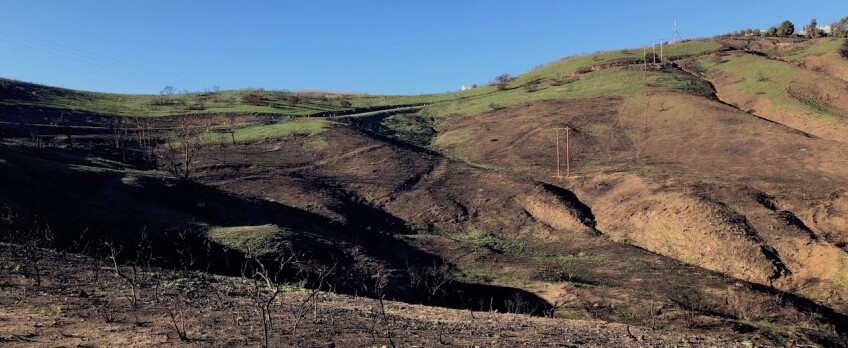Humans and Exotic Grasses that Grow Following Fires Prove to be Dangerous Mix, Expert Says


For Alexandra Syphard, wildfire is all about what fuels it. The chief scientist at Sage Underwriters, a homeowner’s insurance company, studies wildfire, how it relates to human land-use patterns, the climate and vegetation.
“Northern California forested ecosystems are really different than Southern California non-forested chaparral,” Syphon said. “Fires are inherently different, and the management issues and the ecological issues are all concurrently different.”
As state officials allocate millions of dollars for forest cleanup and other efforts to prevent devastating wildfires like in Paradise and near Yosemite National Park in Northern California, and the Woolsey blaze in Malibu and Thousand Oaks, Syphon studies landscape, wind patterns, terrain and climate to do her part. She also pays attention to what humans do. “A fire obviously needs an ignition to start,” Syphon said. “Southern California has very little lightning ignition. We are burning here in Southern California much more than we ever did because humans caused most of the fires, and there are obviously a lot of humans in Southern California that are starting fires.”
In Southern California, dry herbaceous exotic grasses are highly flammable and it doesn’t take much to set them ablaze, Syphon said. Wind and how long it takes for first responders to arrive makes the difference in whether a fire gets out of control.
While all of that is obvious, the problem is scrub lands are becoming grasslands, increasing the odds of a fire chance. Scrub, which relies on fire to germinate, can require up to two decades to recover and reseed and area. If a fire rolls through before it can, the scrub brush cannot recover and dies. Exotic grasses, which burn quicker and easier, “colonize very readily,” Syphon said. “They seem to be everywhere,” she said. “If a shrub is not able to recover, the grasslands come in and establish and eventually you can have a process of converting from native shrubs to grasslands….
“And what can make this even worse is that the grasslands are highly flammable. They may actually increase the fire frequency that can further increase this process of the shrubland being eliminated and the grasses continuing to spread.” Those young grasses invite fire to come through, further eliminating the natural scrub. “I’ve been studying these mountains for a long time and I’m concerned about them,” she said. “Seventy-five percent of the Santa Monica Mountains has just burned and the other part of it burned a few years ago in the Spring fire. The entire landscape is young vegetation right now…You get a few more fires and there’s a really good chance that we might lose some of our natural heritage, which is the vegetation.”
Just weeks after the Woolsey fire, Malibu Canyon already is sprouting exotic grasses where bright evergreen chaparral used to grow, Syphon said.
When the grass dries out during the hot summer, ready for the Fall’s Santa Ana winds, they become fuel for embers, she said. “As humans continue to develop into wildland areas, you’re taking fires and potentially starting them in areas that may not have otherwise burned,” Syphon said. Humans have taken steps, she said, to improve the building materials used in the construction of homes in developments that encroach on open space, even when they create “defensible spaces” around them, she said.
“What I worry about sometimes is people have a false sense of security,” Syphon said. Putting a development into a wildland area, “particularly if it is surrounded by a lot of wildland,” exposes it to danger, especially when humans are added, Syphon said. “Just simply by the nature of human-caused ignitions and the landscape that we have here that’s highly flammable,” she said, “you’re increasing the chance that a fire is going to start, just because there are more people out there in the landscape.”



